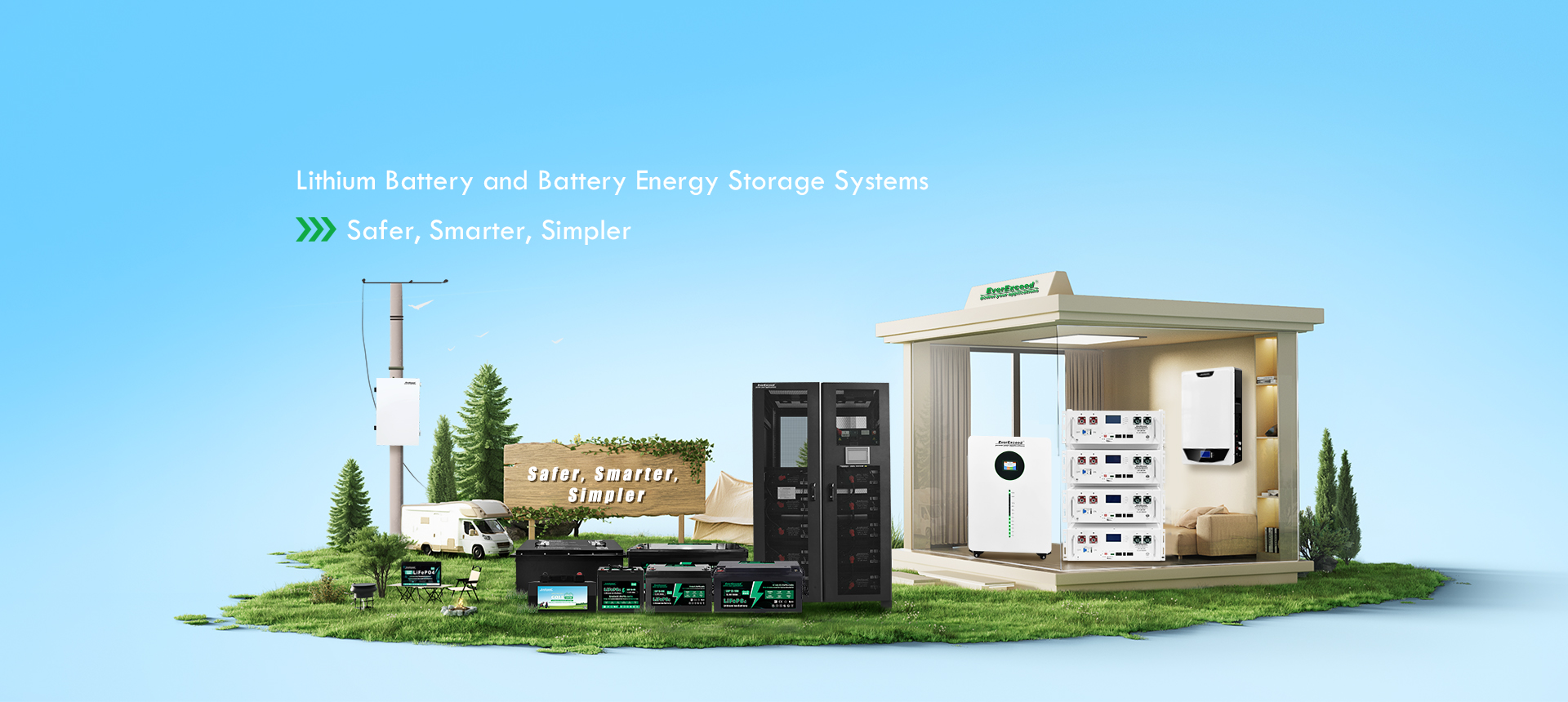1. Identificare gli scenari applicativi
Lo scopo di
batterie al litio
influisce direttamente sulla selezione dei parametri:
-
Dispositivi portatili (cellulari, droni, fotocamere): dare priorità a quelli ad alta densità energetica (come le batterie al litio ternarie) e leggeri.
-
Veicoli elettrici/utensili elettrici: richiedono un'elevata velocità di scarica (C-rate) e una lunga durata del ciclo (come le batterie al litio ferro fosfato).
-
Sistemi di accumulo di energia (energia solare, alimentazione di riserva domestica): puntare su elevata capacità, lunga durata e sicurezza (il litio ferro fosfato è più adatto).
-
Progetti fai da te/attrezzature speciali: è necessario tenere conto delle dimensioni, della compatibilità di tensione e dei requisiti di personalizzazione.

2. Analisi dei parametri chiave
Tensione (V)
-
La tensione nominale di una singola batteria al litio è solitamente di 3,7 V (litio ternario) o 3,2 V (litio ferro fosfato).
-
Selezionare il numero di celle in serie in base ai requisiti del dispositivo (ad esempio, nei veicoli elettrici vengono comunemente utilizzate 48 V e 72 V).
Capacità (Ah) ed energia (Wh)
-
Capacità (Ah): determina la durata della batteria. Ad esempio, una batteria da 10 Ah può essere utilizzata per 2 ore con una scarica di 5 A.
-
Energia (Wh) = Tensione × Capacità: riflette direttamente la capacità totale di accumulo di energia. Quando si confrontano batterie diverse, il Wh è più preciso.
Tasso di scarica (C-rate)
-
Indica la capacità di scarica della batteria. Ad esempio, 1C significa che la batteria si scarica completamente in 1 ora, mentre 10C significa che si scarica completamente in 6 minuti.
-
Le apparecchiature ad alta potenza (come trapani elettrici e droni) richiedono batterie con elevata velocità di scarica (ad esempio 20C o superiore).
Ciclo di vita
-
Batteria ternaria al litio: circa 500-1000 cicli (la capacità scende all'80%).
-
Batteria al litio ferro fosfato
: 2000-5000 cicli, adatto per scenari di utilizzo a lungo termine.
3. Selezione del tipo di batteria
-
Batteria al litio ternaria (NMC/NCA)
o
Vantaggi: elevata densità energetica (200-300 Wh/kg), buone prestazioni a basse temperature (-20℃).
o
Svantaggi: bassa sicurezza (necessaria protezione del circuito), breve durata.
o
Applicabili: elettronica di consumo, veicoli elettrici, droni.
-
Batteria al litio ferro fosfato (LiFePO₄)
o Vantaggi: elevata sicurezza (resistenza alle alte temperature, non infiammabile), lunga durata e costi in graduale diminuzione.
o Svantaggi: bassa densità energetica (90-160 Wh/kg), scarse prestazioni a bassa temperatura.
o Applicazione: sistema di accumulo di energia, autobus elettrico, veicolo elettrico a bassa velocità.
-
Altri tipi: titanato di litio (durata ultra-lunga), ossido di litio e cobalto (alta energia, utilizzato nei telefoni cellulari), ecc., selezionati in base a esigenze specifiche.
4. Considerazioni sulla sicurezza
Circuito di protezione: assicurarsi che la batteria sia dotata di protezione da sovraccarico, scaricamento eccessivo e cortocircuito.
Gestione termica: i pacchi batteria ad alta capacità devono essere dotati di un design di dissipazione del calore (come i pacchi batteria dei veicoli elettrici).
Standard di certificazione: scegli prodotti certificati UL, CE, UN38.3, ecc. per evitare batterie di qualità inferiore.
5. Equilibrio tra marchio e budget
-
Marchi noti: come CATL, BYD, Panasonic, LG Chem, ecc., con qualità garantita.
-
Rapporto costi-efficacia:
o Le batterie a basso prezzo potrebbero utilizzare celle di seconda mano o BMS (sistema di gestione della batteria) di qualità inferiore.
o Il fosfato di ferro e litio ha un costo iniziale elevato, ma è più conveniente nel lungo periodo (lungo ciclo di vita).
6. Fattori fisici e ambientali
-
Dimensioni e peso: assicurati che la batteria possa essere installata nel dispositivo (ad esempio i droni sono sensibili al peso).
-
Intervallo di temperatura:
o Ambiente ad alta temperatura: scegliere celle resistenti alle alte temperature (ad esempio LiFePO₄).
o Ambiente a bassa temperatura: le batterie ternarie al litio offrono prestazioni migliori oppure è necessario aggiungere un sistema di riscaldamento.
7. Regolamentazione e tutela ambientale
-
Limitazioni al trasporto: le batterie di grande capacità potrebbero essere soggette a limitazioni per il trasporto aereo (ad esempio, è necessario dichiarare batterie con capacità superiore a 100 Wh).
-
Riciclo: scegli un marchio che supporta il riciclaggio per evitare l'inquinamento ambientale.
Riepilogo dei passaggi
1. Scopo chiaro: determinare il tipo di dispositivo e i requisiti principali (ad esempio resistenza, potenza, durata).
2. Calcolo dei requisiti: stimare la tensione e la capacità (Wh) richieste in base alla potenza del dispositivo e al tempo di funzionamento.
3. Scegliere il tipo: litio ternario (alta densità energetica) vs. litio ferro fosfato (elevata sicurezza).
4. Verificare la sicurezza: controllare le funzioni di protezione, le certificazioni e le recensioni degli utenti.
5. Corrispondenza con il budget: seleziona il modello migliore all'interno di un intervallo accettabile di marca e qualità.
6. Adattamento dell'installazione: confermare le dimensioni, il peso e l'adattabilità ambientale.
Scenari di esempio:
-
Modifica del veicolo elettrico: selezionare la batteria al litio ferro fosfato da 72 V 20 Ah (lunga durata e alta sicurezza).
-
Alimentazione esterna: selezionare la batteria LiFePO₄ da 12 V e 100 Ah (supporta 2000 cicli, adatta per l'accumulo di energia a lungo termine).
-
Drone: selezionare una batteria al litio ternaria ad alta capacità (ad esempio 4S 1500mAh 75C).
Seguendo i passaggi sopra descritti, puoi individuare sistematicamente la soluzione di batteria al litio più adatta alle tue esigenze.

